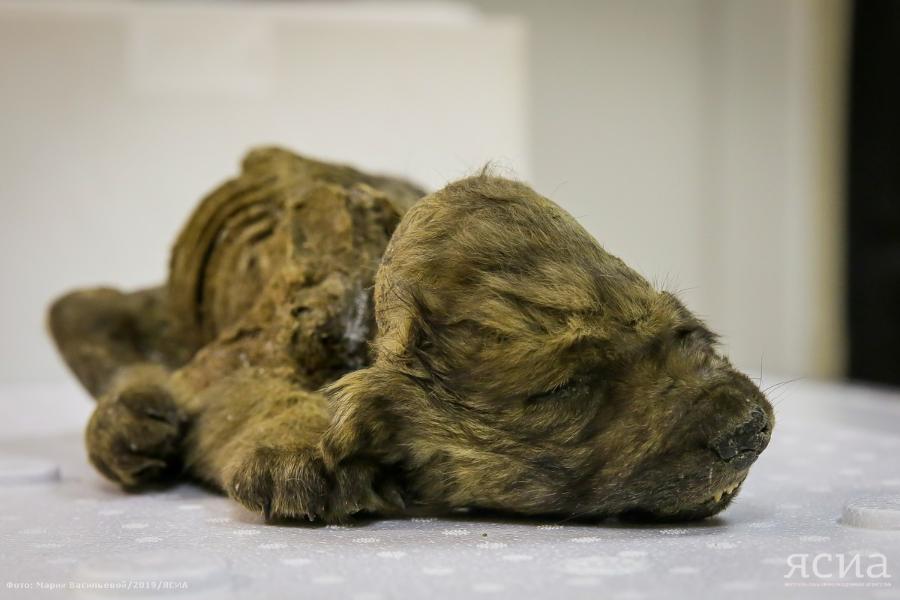
photo: Maria VASILIEVA / YSIA
- 04 December 2019
- 892
Swedish scientists to visit NEFU within the project to study an ancient puppy
The puppy’s cryomummy of an ancient dog or wolf was presented at the Mammoth Museum of North-Eastern Federal University, which is supposedly the oldest dog in North-East Asia. Joint research with a team of geneticist Love Dalen from Sweden will be continued, said Ph.D. in Biological Sciences, head of the research project "Pleistocene and postglacial dogs from the permafrost of Yakutia" of NEFU Institute of Applied Ecology of the North, Sergey Fedorov.
The puppy's remains were found last year, however, scientists showed the discovery only after studies that lasted for a year. In the early autumn 2019, the puppy's age became known - 18 thousand years, and later scientists at Swedish Center for Paleontology, where they studied the mummy, noted that DNA tests cannot define if the puppy was a wolf or a dog. “Such discoveries are extremely rare. The puppy’s condition is very good - its whiskers, eyelashes, hair and velvety nose, as well as internal organs, are well preserved”, said Sergey Fedorov.
According to Ph.D. in Biological Sciences, joint research with Swedish colleagues will continue. “We hope that we can figure out whether the puppy found is actually the oldest dog, wolf or their common ancestor,” noted the Yakut scientist.
Since 2015, researchers at NEFU Mammoth Museum have been conducting a research project that studies the Pleistocene and postglacial canines from permafrost and brings together experts from a wide variety of fields from Belgium, Denmark, Sweden, Germany and Japan. As part of this project, two serious discoveries were previously studied - Tumat puppies, found in 2011 and 2015. Sergey Fedorov emphasized that the origin of these two puppies was also not fully defined.
At the suggestion of the Yakut scientists, the third puppy was called "Dogor" (translated from Yakut - "friend"). There is a riddle of its origin in the puppy's name - Dogor (“Dog or” which in English means “What is it, a Dog or”). Dogor was found in a calm pose unlike of the earlier discovered Tumat puppies. “The puppy’s internal organs are preserved due to the carcass of the ribs, and we can study the gastrointestinal tract of dogs of that era and the features of their nutrition,” said Sergey Fedorov.
In the near future, a scientific plan for the study of the discovery will be compiled: Dogor will be studied by a team of specialists - morphologists, anatomists, histologists, geneticists, and other specialists. In addition, Swedish specialists will visit NEFU as part of the research.


 English
English Russian
Russian Chinese
Chinese